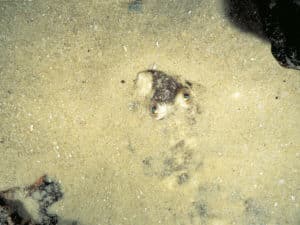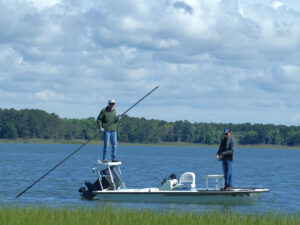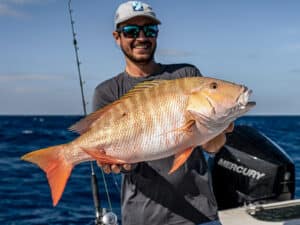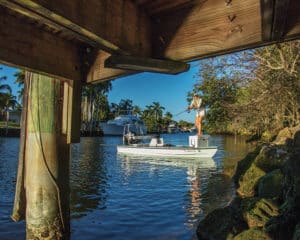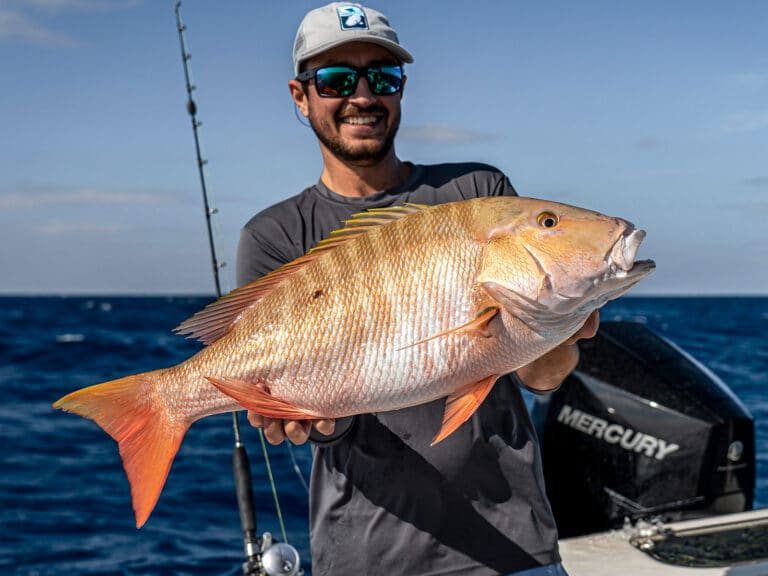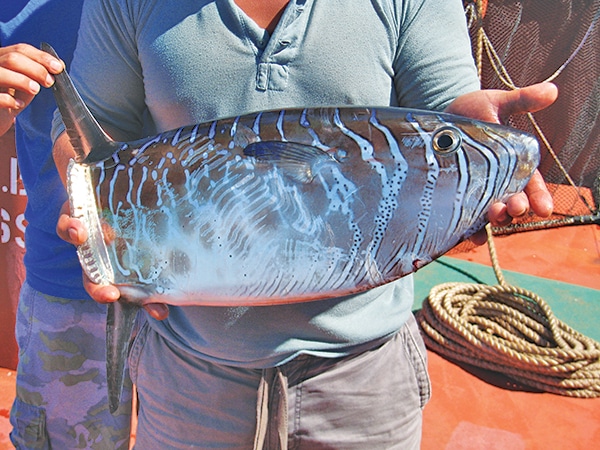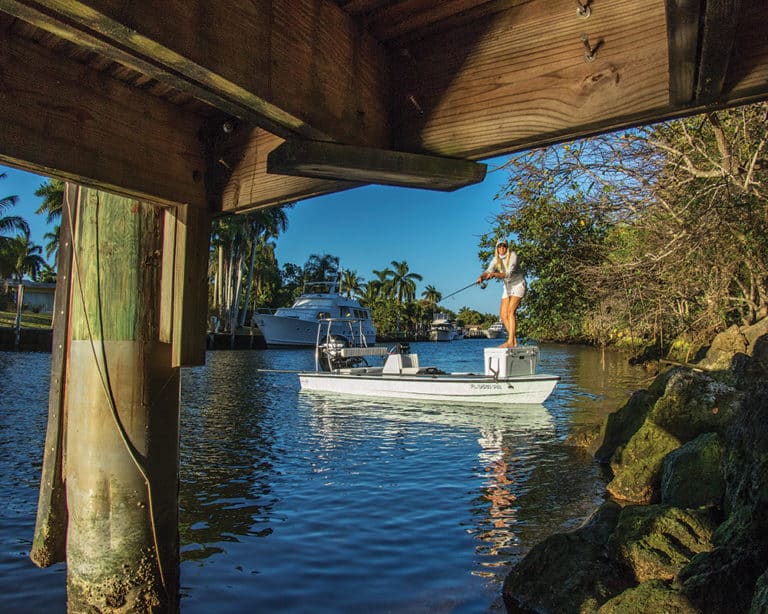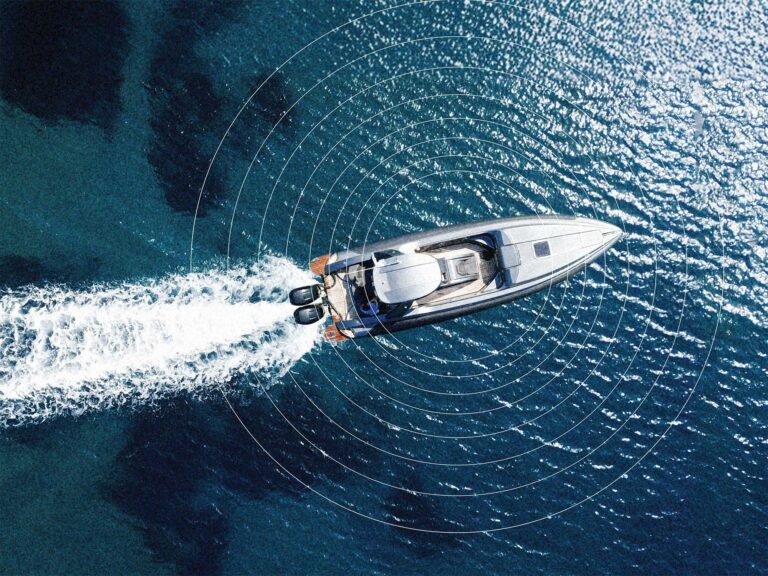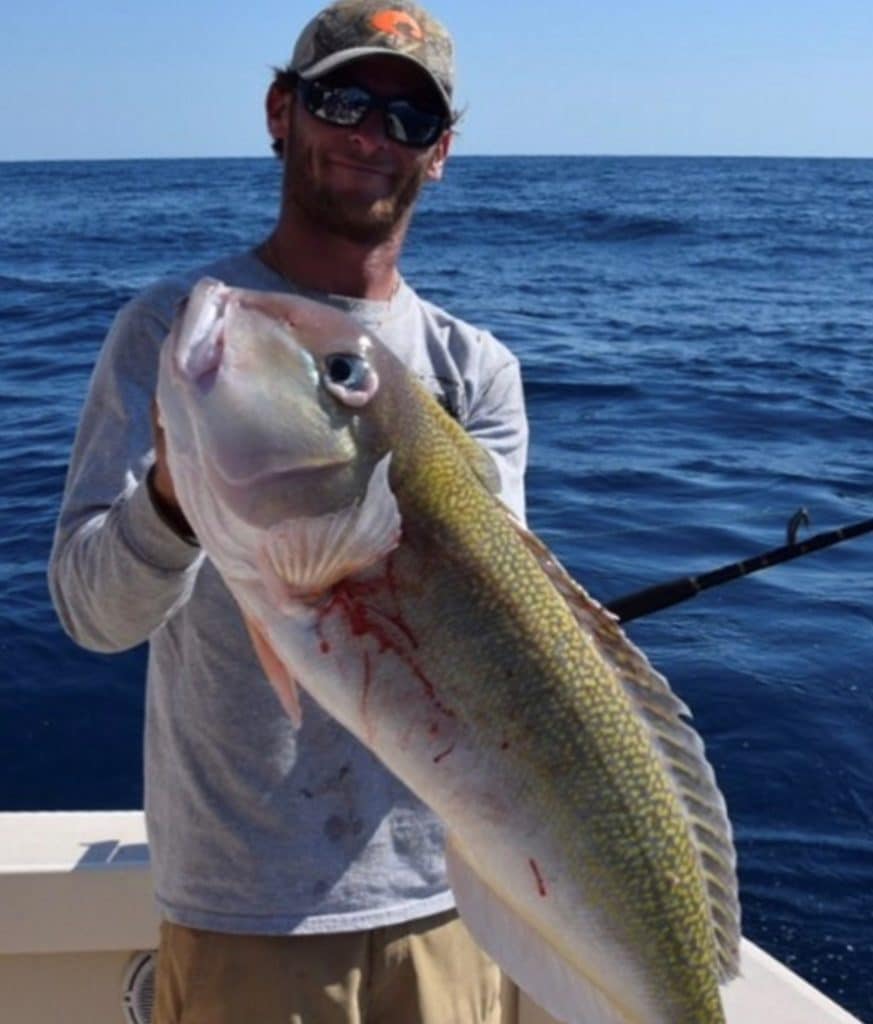
Electronics Critical for Deep-Drop Fishing
Remember depth finders back in the day? Forget fish-finders: Those archaic pieces of equipment were doing a great job if they could tell you depth. Vintage depth finders would literally scribble marks onto a piece of paper. More recently, digital chart plotters took the electronics main stage in the 90s. GPS proved a great tool, but high-quality, compact sonar technology didn’t take off right away. When headed deeper offshore to fish canyons or humps, most GPS units would be cross referenced with a chart that showed more detailed cartography. But older transducers were usually 500 khz max, and if they did read bottom, it was usually intermittent beyond 500 feet.
Deep-dropping involves bottom-fishing in precise areas. Of course, prospecting and saving spots was possible decades ago. But regardless, having a 1kw or better transducer with chirp technology is an absolute game changer. Not only can you mark bottom out to a few thousand feet, you can actually mark bottom structure and fish deeper than 1,000 feet. Marking structure is crucial, but I would argue the ability to mark fish themselves is even more imperative, especially if you are looking to save time while targeting snapper. Like any fish, deep dwelling snapper move around depending on the time of year, conditions, and more.
With the advancement in sounders came the need to explore new areas. Transducers with at least 1kw of power can usually mark bottom as deep as 3,000 feet and often times mark structure, bait, and fish as deep as 600 feet. Chirp transducers packing up to 3kw of power have allowed bottom reading abilities past 10,000 feet and enable you to mark bait and fish as deep a 2,000 feet while daytime sportfishing. Most deep dropping is in the 500-1,200 foot range with the exception of swordfish, which feed in waters even deeper. Having depth sounders that easily paint bottom at these depths has been crucial in advancing this fishery.
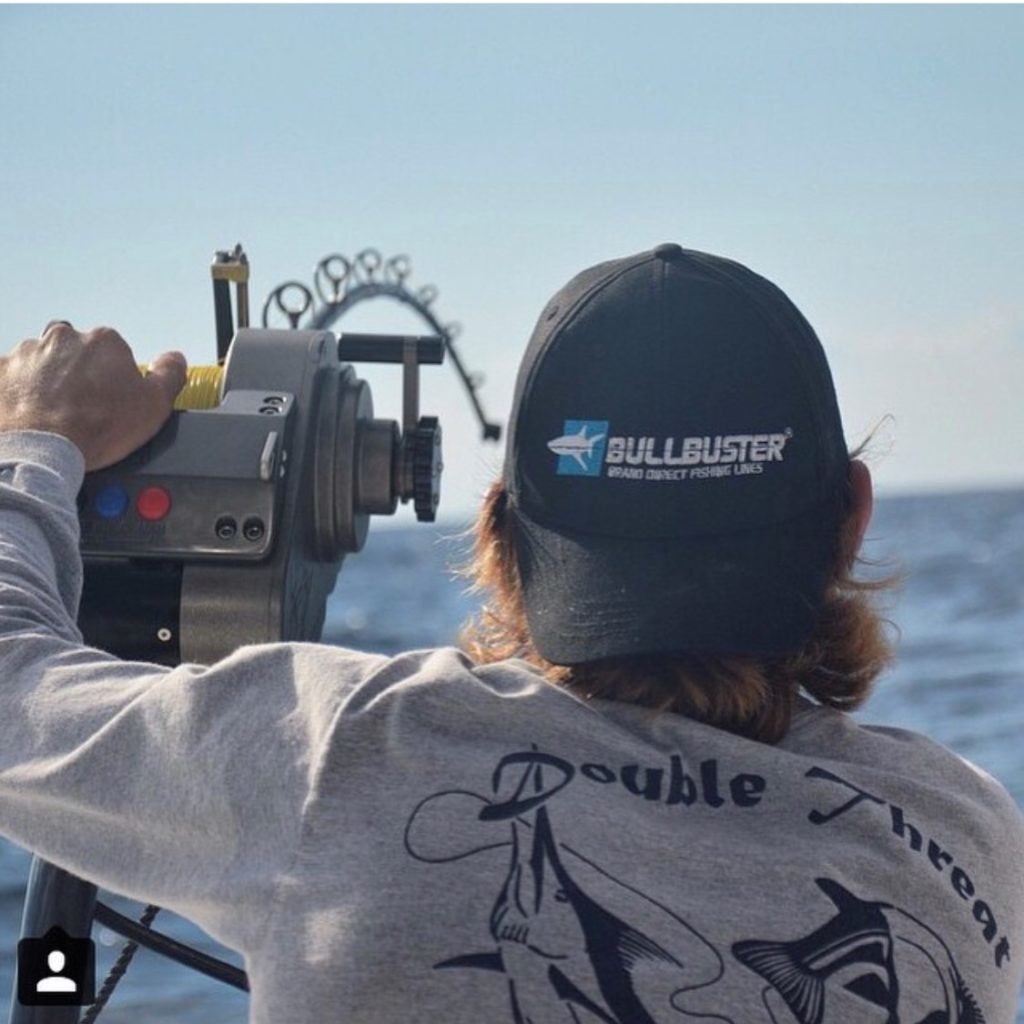
Braided Line For Deep-Drop Fishing
The deep-drop era wasn’t simply driven by advancement in electric-reel technology. In fact, I would argue that braided line and the availability of high-quality depth sounders for recreational fishermen played a much more significant role in the development of deep-drop fisheries. The widespread availability of braided lines at a reasonably affordable price has also revolutionized deep-dropping as we know it. It doesn’t matter what type of reel you have or transducer your sounder uses if you’re using monofilament mainline while deep dropping. Monofilament has a much wider diameter than braided line and much more stretch. The stretch makes it more difficult to see the bite while deep dropping. The lower breaking strength at every diameter also makes deep dropping with monofilament difficult to impossible.
Braided line has about 37 percent the diameter of monofilament line with the equivalent breaking strength. So 80-pound braid is about the same diameter as 30-pound monofilament. Furthermore, braided line has little to no stretch. The mixture of narrow diameter with minimal stretch allows fisherman to ply much deeper into the water column and explore areas that were much more difficult to fish before super braids took the market by storm.
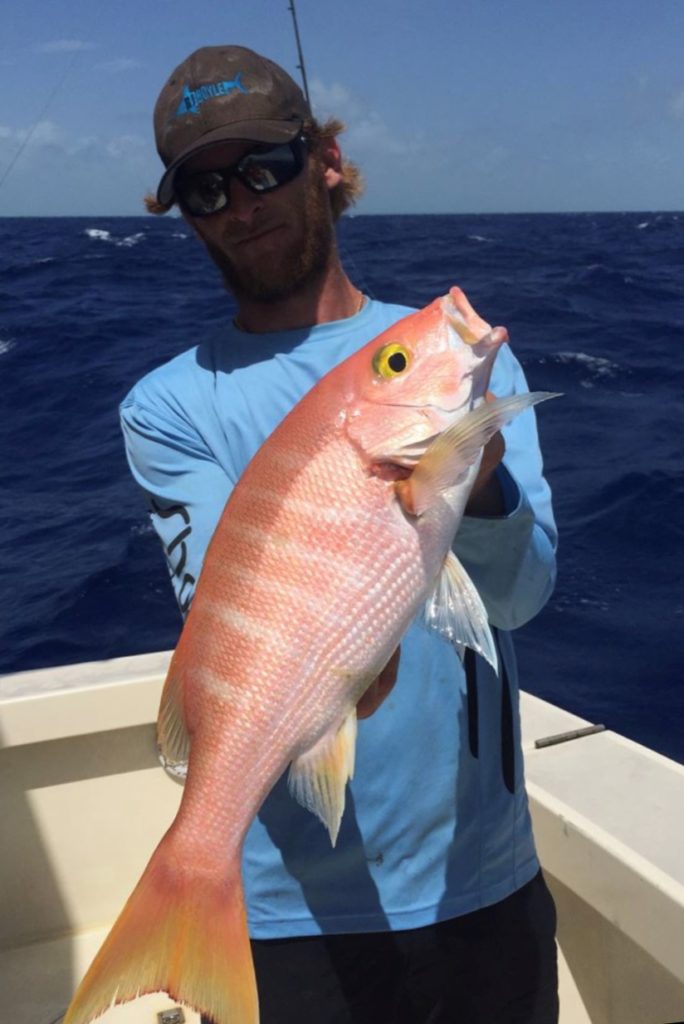
Deep-Drop Fishing in 250 to 500 Feet
Deep-dropping is a popular technique for a multitude of species. When fishing a rocky bottom or deep-reef structure, anglers can find vermillion and yelloweye snapper plentiful and delicious off Florida and in the Bahamas. Throughout Florida’s Atlantic waters, vermillion and yelloweye (silky snapper) are typically caught between 250 and 450 feet of water. For whatever reason, yelloweye are typically a bit deeper in the Bahamas, with 400 to 700 feet the magic number in the islands.
Deep-dropping is all about precision. Vermillions and yelloweye move around quite a bit, so it helps to zoom in using your sounder when fishing for these species. In the right depth range, watch for rockpiles or any structure that sticks up. Once you find an area you want to fish (or a series of numbers), send a bait down to prospect or save the time and look for a solid mark. These fish will sometimes sit 20 to 30 feet off the bottom, making them hard to miss with the right electronics. It helps to mark the fish, so you can position yourself up current and time your drop just right.
When targeting these snapper, a 30- to 50-pound-class reel is just fine, matched to a rod with a light tip. 6/0 hooks should do the trick. For this style of fishing, the Shimano Beastmaster is a newer reel that definitely gets the job done. Also consider reels from Hooker Electric, LP, Daiwa, Krystal and Electramate if you are looking to start plying the depths.
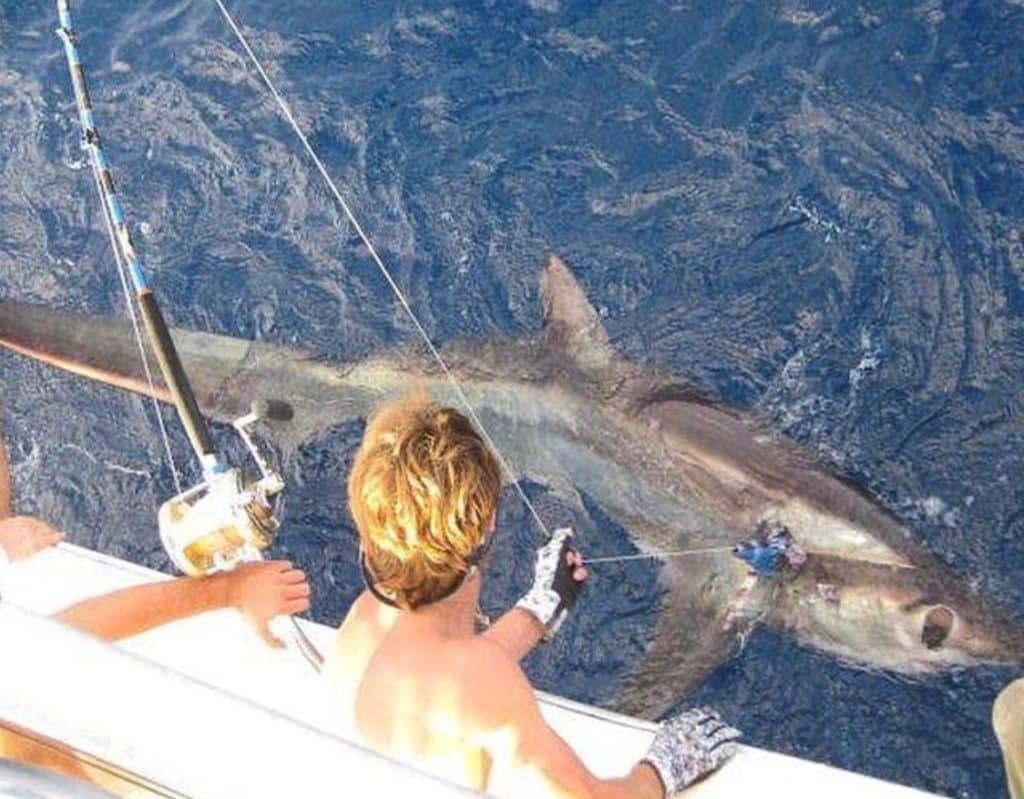
Deep-Drop Fishing in 500 to 800 Feet
If you’re looking for tilefish, head a little deeper and look for mud bottom. If you find yourself over an area that looks extremely unimpressive, send a bait down! Believe it or not, golden tilefish actually prefer mud bottom, and they’re nearly impossible to mark on a depth sounder. The best technique is prospecting (sending the bait down) with the right rig and covering water. About 600 to 800 feet seems to be the best depth for tiles. Use a lay-down rig and keep bouncing bottom until you get a bite. Save the area’s waypoints and do another drift but then move on to avoid fishing out your new spot, so you can return to it later.
Read Next: Fishing Deep Water for Billfish and Tuna
In addition to golden tilefish, snowy grouper, warsaw grouper, yellowedge grouper and more species can all be targeted in similar depths. When targeting grouper in deep water, look for structure; seamounts are a great place to start. Don’t hesitate to try lower-profile rockpiles as well. A small bump on your screen may not seem like much, but when you consider the scale at depth, even the smallest changes can be great and often-overlooked spotsd for grouper. These fish will definitely test your tackle so don’t be caught undergunned. When deep-dropping for grouper, 80-pound-test mainline is recommended, and rigs should be properly crimped with 150-plus-pound leader and heavy-gauge circle hooks.
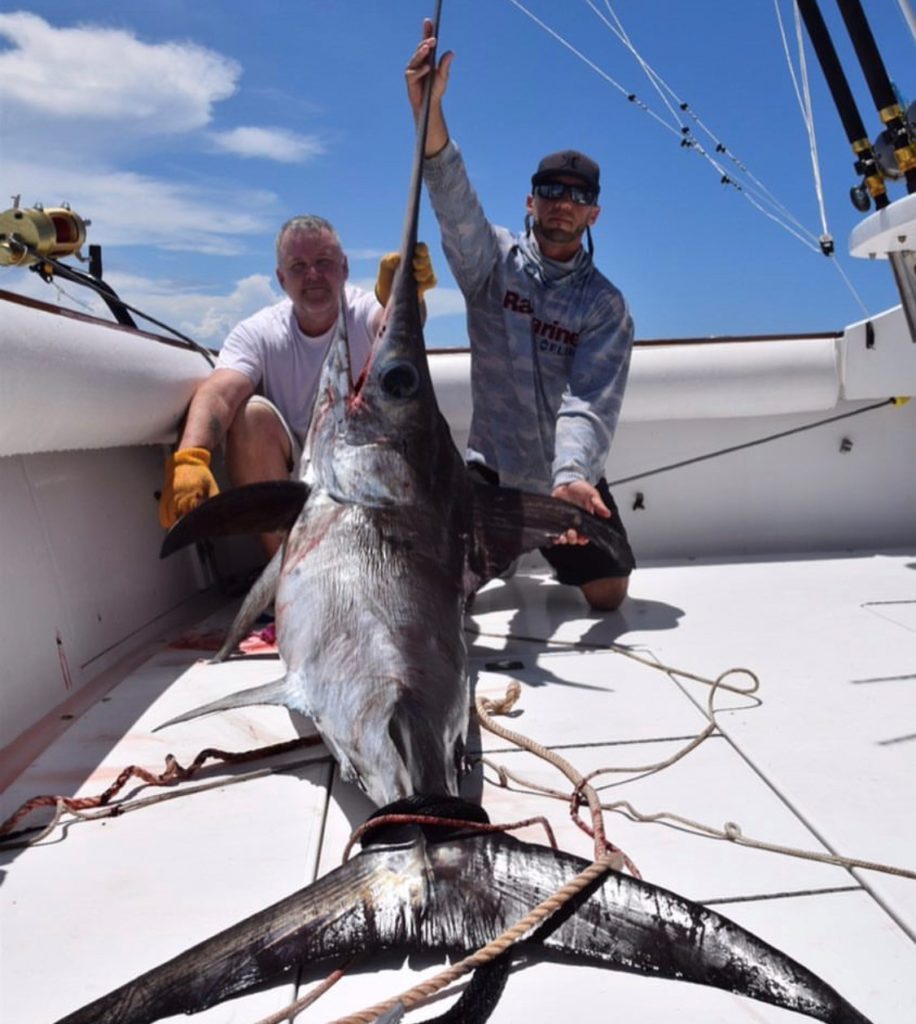
Deep-Drop Fishing in 1,200 Feet and Beyond
Once you venture to the continental shelf and fish depths of 1,200 feet and beyond, you’re targeting an entirely different group of fish. Gamefish that migrate vertically between night and day inhabit these depths, such as swordfish, the most common species targeted deeper than 1,200 feet. During the day, they patrol depths of 1,400 to 1,800 feet. In addition, bigeye thresher sharks inhabit these depths. Often mistaken for swordfish on the bite, threshers are brutal fighters and definitely a bucket-list fish. Other species in this range include pompret, escolar, and even the occasional giant tuna. Yes, bluefin tuna, bigeye tuna, and even yellowfin tuna have all been caught bottomfishing in the 1,500 foot range. When deep-dropping at these extreme depths, it helps to use 80- to 130-pound-class equipment. LP reels and Hooker Electric seems to dominate this market.
About the Author:
Capt. Nick Gonzales runs a custom 43 Hatteras as owner of Double Threat Charters in Miami. He’s known for taking a tournament-style approach to daily charter fishing trips. At only 25, Gonzales has racked up a solid resume of tournament wins, and The Billfish Foundation named him Top Release Captain for Atlantic sailfish for the 2017-18 season.

